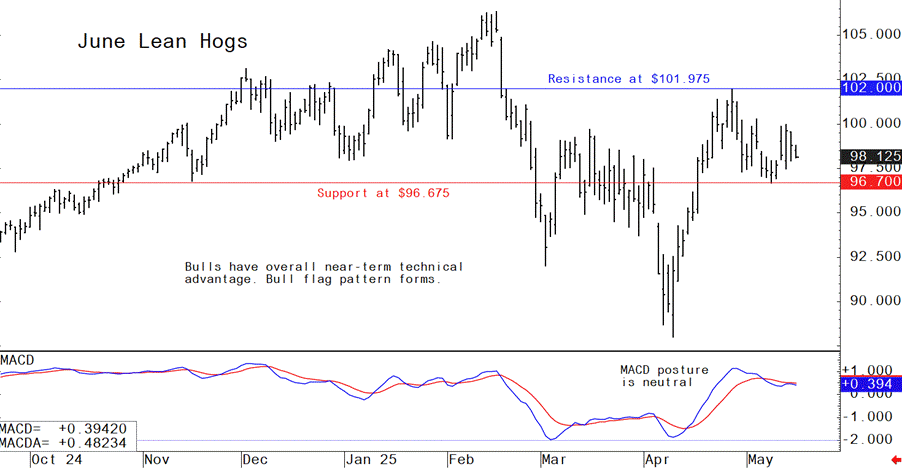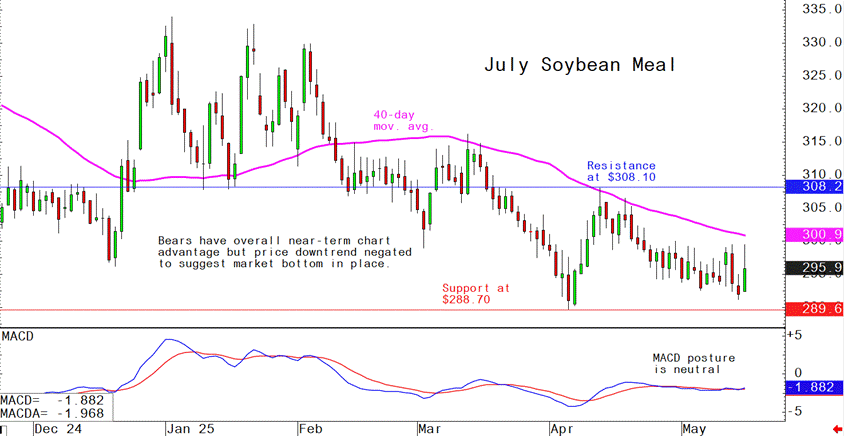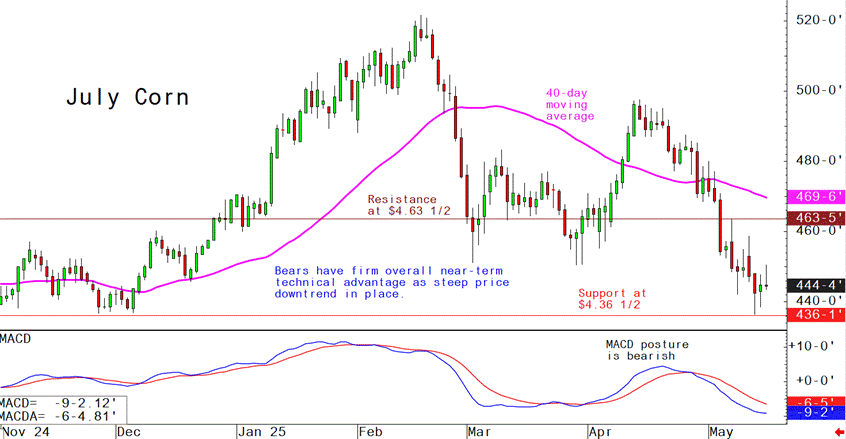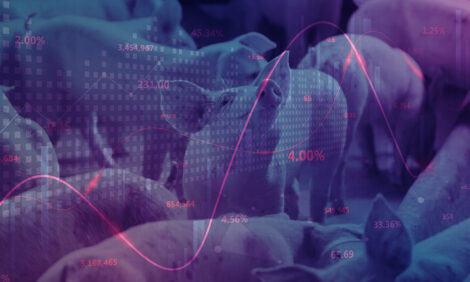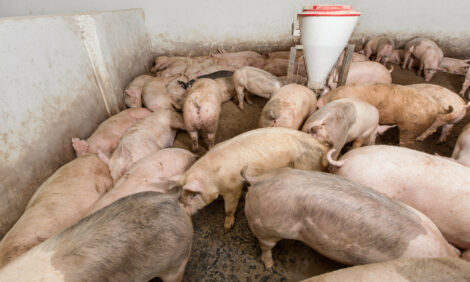



Pig outlook: Lean hog futures bulls have the chart advantage
Livestock analyst Jim Wyckoff reports on global pig newsJune hog futures have the near-term technical advantage as a bull flag pattern has formed on the daily bar chart. Soaring cattle futures prices are also friendly for hog markets. June lean hog futures are at around an $8.00 premium to the CME lean hog index quote, which is $90.77 as of May 13. That suggests hog futures traders anticipate a steady rise in the cash index over the next month as slaughter levels decrease seasonally. My bias is that the hog futures and pork prices will continue to rise in the coming weeks.
Latest USDA and other news regarding the global pork industry
Weekly USDA pork export sales
Pork: Net sales of 24,600 MT for 2025 were up 2 percent from the previous week and 16 percent from the prior 4-week average. Increases were primarily for Mexico (10,600 MT, including decreases of 200 MT), Japan (3,500 MT, including decreases of 200 MT), Canada (2,800 MT), Colombia (2,300 MT, including decreases of 100 MT), and Chile (1,000 MT). Exports of 26,500 MT were up 4 percent from the previous week, but down 3 percent from the prior 4-week average. The destinations were primarily to Mexico (12,000 MT), Japan (4,100 MT), South Korea (3,100 MT), Colombia (1,800 MT), and Canada (1,300 MT).
JBS, the world’s largest meatpacker, reports 78% year-over-year increase in Q1 net profit
JBS profits reached 2.92 billion Brazilian reais ($521 million) — buoyed by robust performance in its Brazilian and U.S. poultry and pork operations. Despite global tariff tensions, CEO Gilberto Tomazoni said the impact on operations remains “insignificant.”
“Quarter after quarter, our results prove that we made the right choices in building and managing our global multi-protein platform,” Tomazoni stated.
Key Financial Highlights
- Net profit: 2.92 billion reais, up from 1.64 billion reais a year earlier
- EBITDA: 8.92 billion reais, beating analyst estimates of 8.77 billion
- Net revenue: 114.1 billion reais, +28% YoY, but -2.2% QoQ
- Profit growth from Q4: +21.2%
The company saw record EBITDA margins in Brazil's Seara processed foods division and in U.S.-based Pilgrim’s Pride.
Segment Performance & Trade Exposure
- North America beef division posted a 37.5 billion reais revenue (up 36% YoY) but suffered an operating loss of 587.2 million reais due to U.S. cattle shortages.
- Rising cattle costs in both Brazil and the U.S. pose future margin risks.
- China accounted for 23% of JBS’s $4.9 billion in exports last quarter.
CEO Tomazoni dismissed short-term concerns over potential oversupply of pork and chicken in the U.S.
Outlook: JBS is nearing a major milestone: a planned listing on the New York Stock Exchange, expected next month pending shareholder approval within 10 days.
China’s meat imports decline in April 2025
Sharp Drop in Meat Imports Reflects Broader Economic and Trade Shifts
China’s meat imports saw a notable decline in April 2025, continuing a downward trend that has developed over recent months. In April, China imported 513,000 metric tons (MT) of meat, a drop of 35,000 MT (6.4%) from March and 31,000 MT (5.7%) less than April 2024. For the first four months of 2025, total meat imports reached 2.16 million metric tons (MMT), down 64,000 MT (2.9%) compared to the same period last year.
Key drivers behind the decline
- Economic headwinds: Slower economic growth and softer consumer demand are reducing the appetite for imported meat, particularly after the Lunar New Year festivities.
- Domestic supply: China has built up ample domestic meat stocks, especially pork, which has reduced the need for imports.
- Trade frictions: Ongoing trade tensions, especially with the U.S., have led to regulatory disruptions and uncertainty for importers. Expiring U.S. plant licenses and high tariffs have further complicated trade flows.
- Currency pressures: The depreciation of the yuan against the U.S. dollar has made imports more expensive, impacting demand for foreign meat products.
- Shifts in consumer behavior: Chinese consumers are increasingly price-sensitive, favoring cheaper protein sources and lower-cost imports, particularly from South America for beef.
Sector-specific trends
- Pork: Pork imports may see marginal growth to offset a forecasted decline in domestic production, but overall demand remains subdued due to high domestic output and economic pressures.
Outlook: The decline in China’s meat imports is expected to persist as domestic production remains strong, economic challenges continue, and trade uncertainties linger. This trend is reshaping global meat trade flows, prompting major exporters like the U.S., Brazil, and Australia to adjust their strategies in response to changing Chinese demand.
The next week’s likely high-low price trading ranges:
June lean hog futures--$96.675 to $101.975 and with a sideways-higher bias
July soybean meal futures--$291.20 to $308.10, and with a sideways-higher bias
July corn futures--$4.36 1/2 to $4.70 and a sideways-higher bias
Latest analytical daily charts lean hog, soybean meal and corn futures
